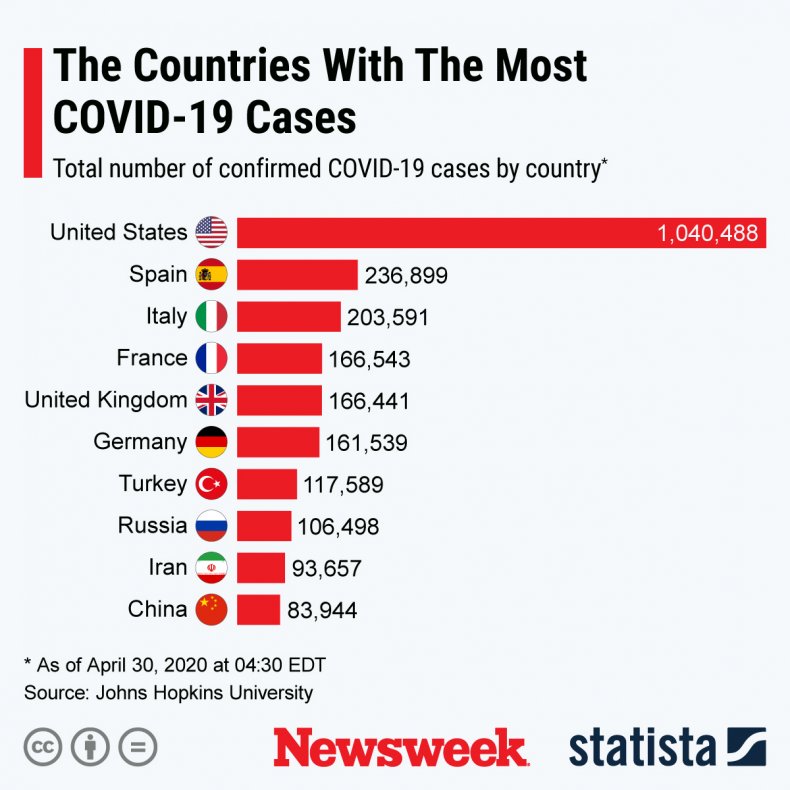BY KASHMIRA GANDER
Officials need to prepare the public for the prospect of a period of coronavirus resurgences over the next two years, infectious disease experts have said in a report.
A team from the Center for Infectious Disease Research and Policy (CIDRAP) at the University of Minnesota also urged leaders to prepare for the "worst-case scenario" such as there being no vaccine; draw up plans to ensure healthcare workers are protected during spikes of disease; and map how to reinstate measures to prevent COVID-19 from spreading.
In the document titled The Future of the "COVID-19 Pandemic: Lessons Learned from Pandemic Influenza," the experts wrote: "Risk communication messaging from government officials should incorporate the concept that this pandemic will not be over soon and that people need to be prepared for possible periodic resurgences of disease over the next 2 years."
Coronavirus Death Rate Will Largely Be a Mystery Until the Pandemic Ends
They said: "We must be prepared for at least another 18 to 24 months of significant COVID-19 activity, with hot spots popping up periodically in diverse geographic areas.
"As the pandemic wanes, it is likely that SARS-CoV-2 will continue to circulate in the human population and will synchronize to a seasonal pattern with diminished severity over time."
There are three potential ways the COVID-19 pandemic may pan out, according to the researchers. The current first wave may be followed by repetitive smaller waves over a 1- to 2-year period, before diminishing sometime in 2021. The second scenario would see the first wave followed by a larger wave in fall or winter 2020, and one or more smaller waves in 2021. In the third, a "slow burn" of cases would occur without a clear pattern of waves.
The authors wrote: "The virus caught the global community off guard, and its future course is still highly unpredictable; there is no crystal ball to tell us what the future holds and what the 'end game' for controlling this pandemic will be."
Since the pandemic started late last year, more than 3.2 million COVID-19 cases have been confirmed, over a million people are known to have recovered, and 233,416 people have died, according to Johns Hopkins University. The U.S. is currently the county with the most known cases, as shown by the Statista graph below.
 A graph showing the countries with the most known COVID-19 cases.STATISTA
A graph showing the countries with the most known COVID-19 cases.STATISTA
While SARS-CoV-2 and flu viruses are different in many ways, such as the former's longer incubation period which enables it to "move silently" through populations, previous flu pandemics are a useful point of comparison for the current crisis, the authors said. For instance, a strain of flu with the potential to cause a pandemic and SARS-CoV-2 would both be new viruses to which humans have no immunity, and can spread asymptomatically through respiratory droplets.
The virus which causes COVID-19 is called SARS-CoV-2, and shouldn't be confused with the germ which causes the severe acute respiratory syndrome (SARS) disease. SARS-CoV-2 is a member of the large coronavirus family, which includes the viruses that cause diseases such as SARS, Middle East Respiratory Syndrome (MERS), and some common colds.
Flu viruses and SARS-CoV-2 have spread globally unlike the SARS and MERS viruses, "therefore, these pathogens do not provide useful models for predicting what to expect with this pandemic," the team said.
Outlining the forecast of his team's report, CIDRAP director Michael Osterholm told MSNBC's The Last Word on Thursday: "There's no question we're going to see many, many more infections."
Currently, around 5 to 15 percent of people in the U.S. are thought to have been infected by the virus, but the outbreak likely won't stop until the figure reaches 60 to 70 percent, he said.
"There's no question we're going to have major, major challenges with the number of cases, the serious disease. We're only in the second inning of a nine inning game so we've got a long way to go," he said.
No comments:
Post a Comment